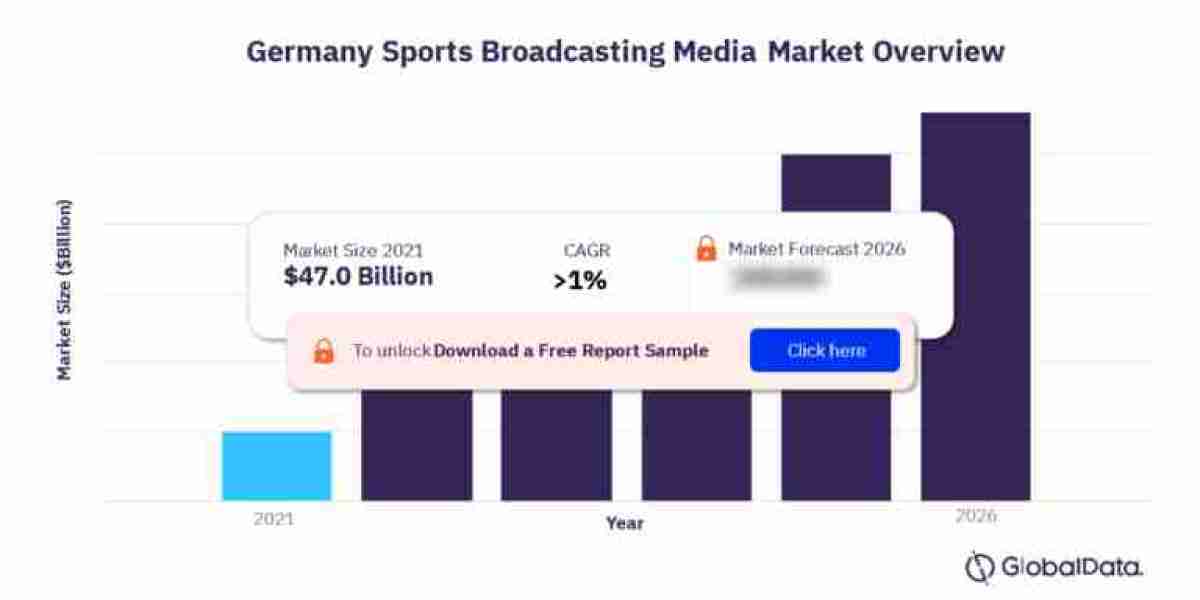The evolution of the sports broadcasting media market in Germany has been marked by significant changes in technology, content distribution, viewer preferences, and the commercialization of sports.

For more insights on this report, download a free report sample
Here is an overview of the key stages in the evolution of this market:
Early Radio and Television Broadcasts (1920s-1950s):
- The earliest sports broadcasts in Germany were on radio during the 1920s. These broadcasts were limited in scope and typically covered major events like the Olympics.
- The introduction of television in the 1950s expanded the reach of sports broadcasts. Public broadcasters like ARD and ZDF began airing live coverage of sports events, including football matches and the Olympics.
Expansion of Football Coverage (1960s-1980s):
- Football, especially the Bundesliga, became a central focus of sports broadcasting in Germany during the 1960s and 1970s.
- The 1974 FIFA World Cup, held in West Germany, was a turning point, attracting a global audience and leading to increased investment in sports broadcasting infrastructure.
- Televised football matches became a national pastime, and iconic commentators like Ernst Huberty and Günter Netzer gained celebrity status.
Cable and Satellite Broadcasting (1990s):
- The 1990s saw the advent of cable and satellite television in Germany, allowing viewers to access a wider range of sports channels.
- Private broadcasters like RTL and SAT.1 began to compete with public broadcasters for sports broadcasting rights.
Pay-TV and Digitalization (2000s):
- Pay-TV provider Sky (formerly Premiere) emerged as a major player in the German sports broadcasting market. It acquired exclusive rights to the Bundesliga and other sports leagues.
- Digitalization led to the rise of interactive services, including on-screen statistics, multiple camera angles, and pay-per-view options.
Streaming and Online Platforms (2010s-Present):
- The 2010s marked a shift toward digital platforms and streaming services. DAZN, a sports streaming service, entered the market and secured rights to various sports leagues and events.
- Traditional broadcasters like ARD and ZDF adapted by offering live streaming on their websites and mobile apps.
- The fragmentation of sports rights led to multiple streaming options, enabling viewers to choose their preferred platform.
Mobile and Multiscreen Viewing:
- Viewers increasingly watch sports content on mobile devices, tablets, and smart TVs, driving the development of dedicated sports apps.
- Multiscreen experiences, such as split-screen coverage, live stats, and social media integration, have become common.
E-sports and Niche Sports (2010s-Present):
- The rise of e-sports and niche sports like handball and biathlon has expanded the diversity of sports content available to viewers.
- Streaming platforms have played a pivotal role in promoting these sports.
Sponsorships and Advertising:
- The sports broadcasting market has attracted substantial advertising and sponsorship deals, with brands seeking to reach engaged sports audiences.
Rights Bidding Wars:
- Intense competition for broadcasting rights has driven up costs. Broadcasters often engage in bidding wars to secure exclusive rights to popular sports events.
Regulatory Oversight:
- The market is subject to regulatory oversight to ensure competition and consumer protection. Regulators address issues like exclusivity and affordability.
Internationalization:
- Germany is a key market for international sports organizations. Events like the UEFA Champions League and Formula 1 attract a global viewership.
Viewing Habits and Fan Engagement:
- Viewer habits have evolved, with fans engaging in online forums, social media discussions, and fantasy sports leagues to enhance their sports experience.
The sports broadcasting media market in Germany continues to evolve rapidly, with ongoing developments in technology, viewer preferences, and the commercialization of sports. The shift toward digital platforms, mobile viewing, and the emergence of niche sports and e-sports are likely to continue shaping the market in the coming years. Additionally, the impact of global events like the COVID-19 pandemic on sports broadcasting and fan engagement will also play a role in the market's future evolution.








